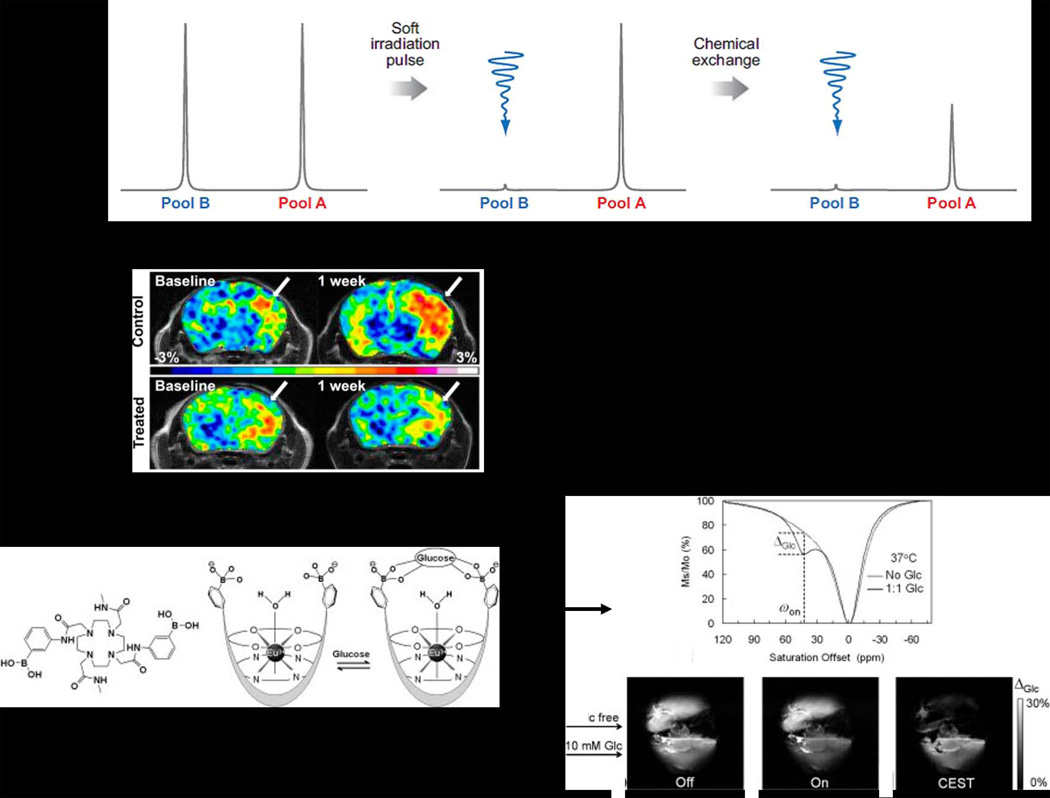Figure 3.
A) All illustration of two chemical types of protons in exchange with one another. Selective saturation of pool B for a period of a few seconds results in a decrease in intensity of pool A (51). B) An example of endogenous CEST in an orthotopic glioblastoma multiform (GBM) tumor in a mouse. Presaturation of all exchangeable amide protons at 3.5 ppm downfield of water results in a larger CEST signal in the tumor compared to the surrounding healthy brain. The bottom images illustrate that the CEST signal decreases after one round of temozolomide (TMZ) chemotherapy, the standard drug used in GBM patients. C) An example of an exogenous CEST agent. Here, a Eu3+ macrocyclic ligand complex was designed to bind glucose. This glucose sensor shows no CEST signal in the absence of glucose but a strong CEST signal after addition of glucose. This has been used to image the extracellular distribution of glucose in a perfused liver model. Molecular sensors such as could ultimately prove useful in differentiating between livers producing normal amounts of glucose versus livers over-producing glucose such as in patients with type II diabetes. Reproduced from (46,54).

